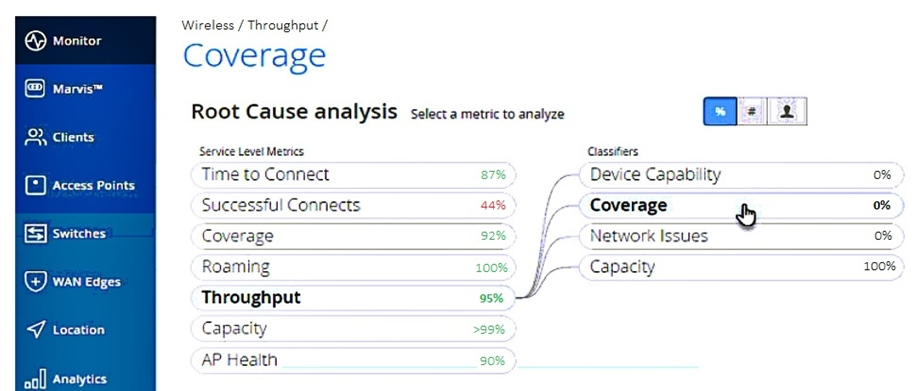Juniper JN0-451 Mist AI, Specialist JNCIS-MistAI Exam Practice Test
A user with a PSK calls you and says, ''The Wi-Fi worked for a week and now it does not work.'' There have not been any recent configuration changes to the network. You suspect that a time-based setting has reset the key.
In this scenario, where would you begin troubleshooting?
Answer : C
In this scenario, you would begin troubleshooting by checking the WLAN-level Pre-Shared Keys.
Which Wireless Assurance SLE provides information on Opportunistic Key Caching (OKC)?
You are deploying multiple Mist APs across many sites in your network. You must ensure that you can group similar devices together to easily apply consistent WxLAN policies across multiple sites.
Which configuration object should be used to accomplish this behavior?
Answer : B
When deploying multiple Mist APs across many sites in your network and grouping similar devices together to easily apply consistent WxLAN policies across multiple sites, you should use device profiles.
You must define VLANs as untagged, tagged, or using VLAN pooling.
In this scenario, where would you accomplish this task in the Juniper Mist UI?
What are two ways to access Marvis? (Choose two.)
Answer : A, B
Use the conversational assistant, which allows you to ask natural language questions and get answers from Marvis.
Use Actions, which are predefined queries that you can select from a list and get results from Marvis.
Click the Exhibit button.

Referring to the exhibit, as part of the Throughput SLE in the Mist UI, the Coverage classifier indicates the signal strength of which device?
Answer : C
As part of the Throughput SLE in the Mist UI, the Coverage classifier indicates the signal strength of the client.
Which two statements are correct about channel bonding? (Choose two.)
Answer : A, B
Channel bonding combines two adjacent channels to create a wider channel, effectively doubling the available bandwidth. However, this also doubles the required device resources such as power and processing.